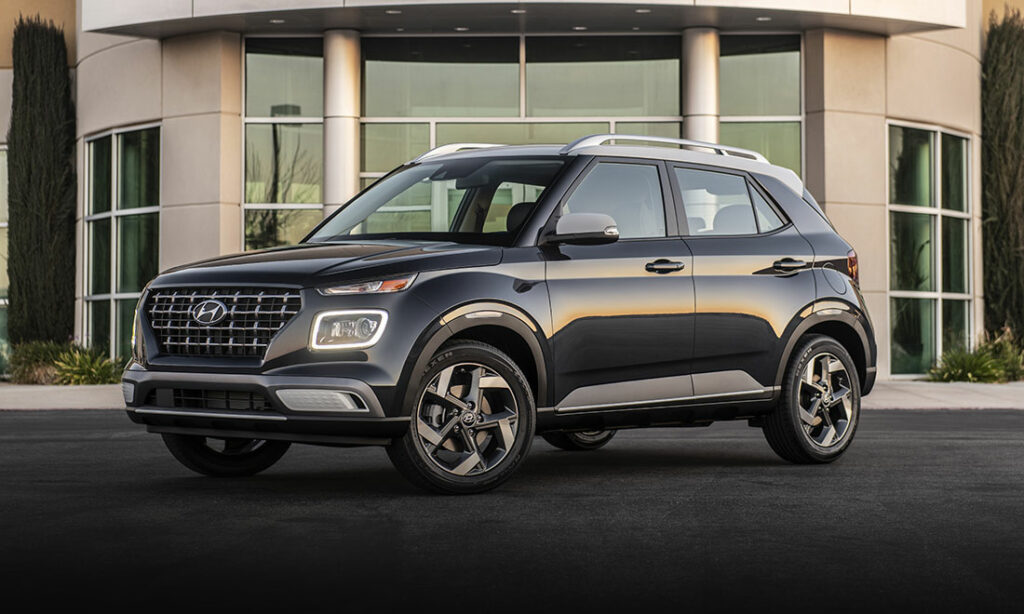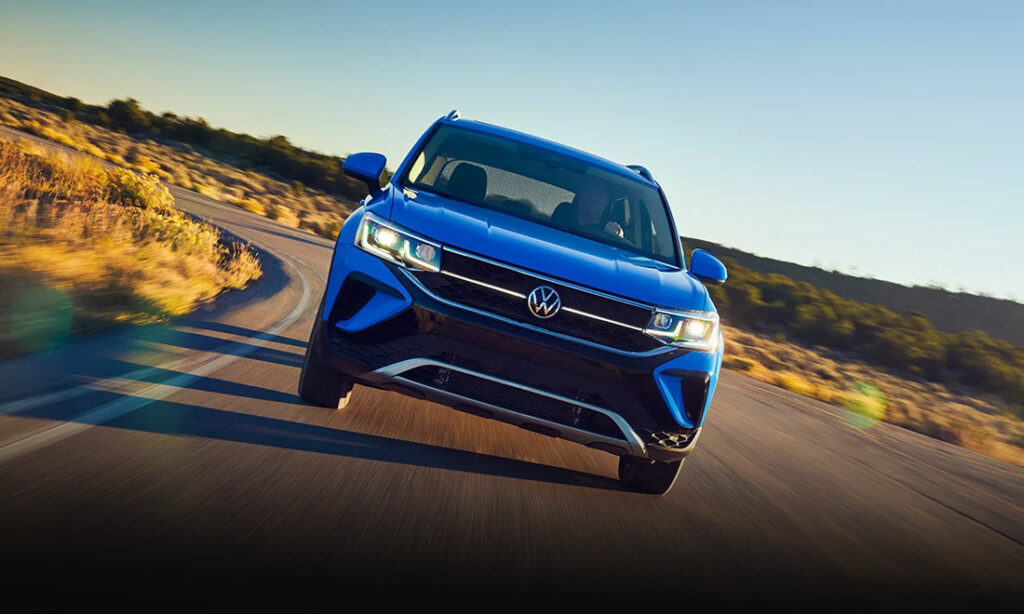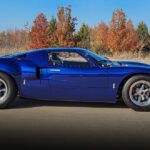A throwback to American muscle, the Dodge Viper has entered into the realm of automotive legend as the purest expression of speed from the last 25 years.
The Most ‘Merican Muscle Car

2008 Dodge Viper SRT 10 – fcanorthamerica.com | Shop Dodge Viper on Carsforsale.com
The Dodge Viper is spoken of in car circles with a mixture of awe, reverence, and no small dose of trepidation. That’s because the Viper and it’s legendary V10 emphatically reminded the world what American muscle was about, power. Stripped down and flat out, the Viper ripped through corners and torched straightaways like few other cars have. This race car for the street was an unruly beast to be sure, but for those with the skill and nerve to master it, the Viper delivered one of the most visceral experiences of any car ever built. From its genesis in the late 1980s to its untimely demise just a few short years ago, the Viper set track record after track record and cemented itself as one of automotive history’s greatest.
In the Spirit of the ‘60s
Back in the late 1980s, Chrysler president Bob Lutz devised a project to reignite sales for his flagging company and reclaim some of the excitement they’d once been known for. Lutz’s plan was for a new sports car in the vein of the classics of the 1960s, a long hood, short rear deck, and a whole lot of engine. He also had just the right designer to help him in Tom Gale, who had started his work at Chrysler on projects for the Plymouth Barracuda and Dodge Challenger. Foremost in the minds of Lutz and Gale was a reimagining of Carrol Shelby’s Cobra, the proto-typical lightweight speed demon. The goal was going fast, all else would be an afterthought. Shelby even consulted on the project and the name, Viper, was intended as a direct echo of his famous racing car.
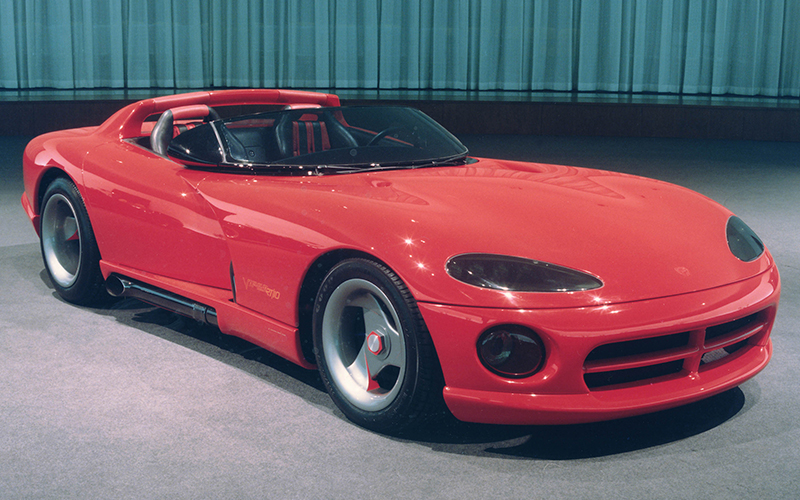
A prototype of the Viper made its debut at the Detroit Auto show in 1989 and wowed the automotive press and the public at large. Most radical was the plan to put a V10 into the engine bay of the Viper. Why a V10? Because more is more, obviously. Chrysler wanted the Viper to make a statement, and how better than with ten cylinders? To accomplish this, Chrysler enlisted the help of (then) subsidiary Lamborghini to help build the engine. With Lambo’s help the Viper design team started with a V10 originally designed for the RAM pickup and traded out the cast iron block and heads for lighter aluminum, saving some 160lbs.

The completed production version of the Dodge Viper debuted at the Detroit Auto show in 1992. There, Chrysler chairman Lee Iacocca bragged that the car was garnering huge attention not only from American but European enthusiasts as well with orders even coming from the likes of the president of the German Ferrari Club.
Nasty, Brutish, and Fast

The first-generation Dodge Viper RT/10 kept things simple. In keeping with its race car pretentions, it was stripped of many modern amenities like AC and ABS, airbags, side windows, exterior door handles, and even a fixed roof. The Viper took the long in front, short in back philosophy to heart with a pronounced hood and truncated rear deck. Flanking both sides just below the door sills were the Viper’s exhaust pipes. And yes, these were often hot, and yes, owners did often burn themselves, but darned if they didn’t look super cool.

Comfort and safety were not the motivation behind the Viper however, speed was. And speed it had. The 8.0L V10 put down a whopping 400hp and 465lb.-ft. of torque and shot from 0 to 60mph in just 4.2 seconds. Top speed crested 165mph.
Setting the Pace

The second generation of Viper arrived in 1996 and saw a number of changes including a slight bump in horsepower to 410 and an even higher top speed of 189mph. The Viper added more aluminum with upgrades made to the suspension components. New brakes were also added, though ABS was still not on the menu. The cool/dangerous exhaust pipes were moved to the rear. The new second-generation Viper was used as the pace car at the ’96 Indy 500.

The biggest change for the Viper in 1996, however, was the addition of a coupe body style. For the first time the Viper had a fixed roof. The GTS coupe also added airbags, exterior door handles, AC, and side windows. To make up for all this added weight, the horsepower was also increased with upgrades to the engine. The Viper’s V10 now made a thundering 450hp and 488lb.-ft. of torque.

In 1999, Dodge debuted the Viper GTS ACR (American Club Racer) intended to specifically for the track. Fewer than 200 were every made, but the ACR was the beginning of the Viper as a track record destroyer. The ACR came with racing goodies like BBS wheels and five-point racing harnesses. The ripped from 0 to 60 in 4.5 seconds and attained a top speed of 180mph.
Never Enough Displacement

The third generation of Viper began in 2003 with the SRT 10 roadster. This iteration of the Viper was larger and lighter than the prior generation, adding yet more aluminum and carbon fiber to save weight. With speed as the polestar for the Viper, the V10 also got bored out from 8.0L to 8.3L. The Viper now boasted 500hp and 525lb.-ft. of torque allowing it to reach a top speed of 195mph. Not ones to take an L, Dodge reintroduced the side exhaust (with extra cladding for all the whiners and their third-degree burns). New brakes improved stopping power and safety with the inclusion of ABS.
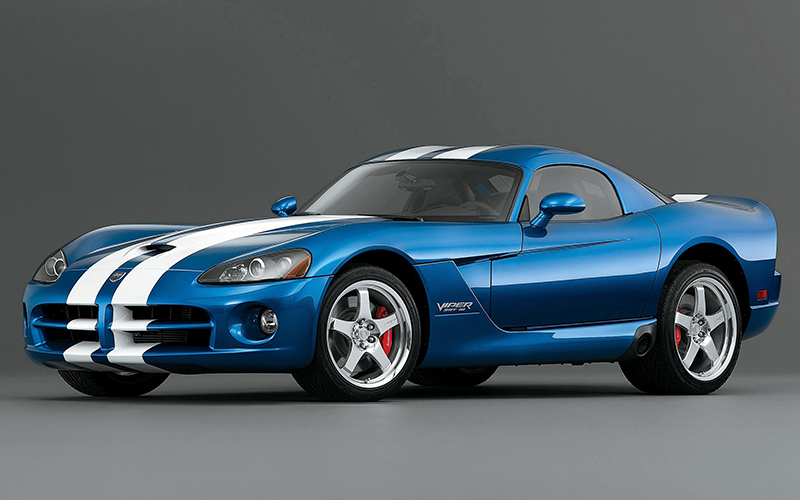
In 2006, Dodge again added the option of a roof with the Viper with the SRT 10 coupe. This had the added benefit of making the car stiffer, 30% stiffer than the roadster version in fact. A new rear deck spoiler granted additional downforce. As good as the Viper was in 2006, it wasn’t the hottest seller for Dodge and the car was put on hiatus for model year 2007.
Marrying the Simple and Sophisticated

The fourth-generation Viper returned in 2008 with some major upgrades and some truly imposing numbers as a result. The V10 got another upgrade to 8.4 liters, ti also received new throttle bodies and variable valve timing. A new six-speed Tremec TR6060 manual transmission was also added along with a limited-slip differential and revised suspension. With these upgrades the Viper produced a hair-raising 600hp and 560lb.-ft. of torque and reached a white-knuckle top speed of 202 mph. It handled better, too. The SRT 10 ACR also saw upgrades, adding a rear wing that grated over 1,000lbs. of downforce and new rotors that helped the Viper stop 60-0 in less than 100 feet.

Despite the insane performance numbers, the sales numbers for the Viper were continuing to lag. The attendant economic turmoil of the Great Recession made matters even worse and the Viper had turned from halo car to millstone. The Viper was again shelved in 2010.
Last Dance for the Viper?
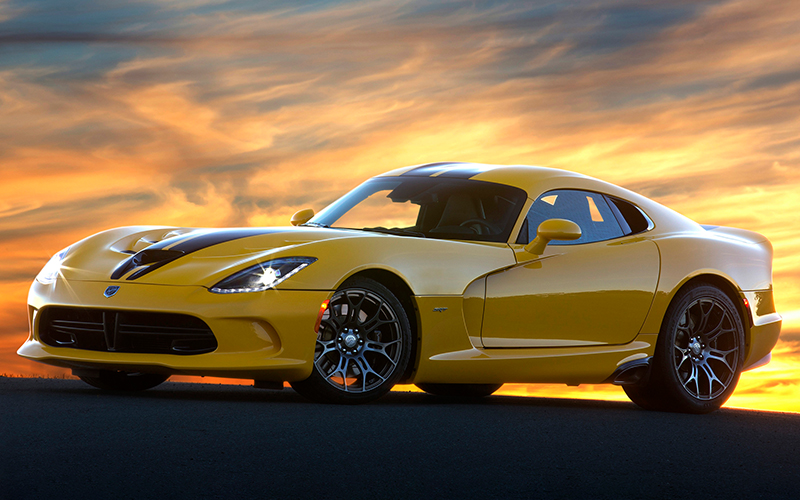
Despite the difficulties in making the Viper profitable, Chrysler gave the car another chance under the SRT banner in 2013 and 2014. The SRT Viper offered yet more ponies, now a full 640hp and a still higher top speed of 206 mph. It was again lighter, with more carbon fiber and more aluminum taking over the body.
In 2015, the Viper returned under the Dodge name and even added a new trim level in the Viper GT. The GT added one of the few real creature comforts in the Viper, Nappa leather seats along with an additional 5 horsepower.
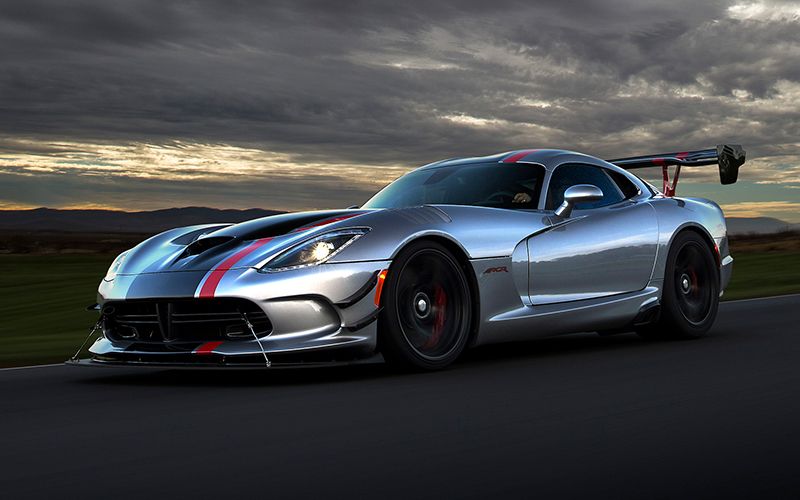
What is perhaps the greatest of all Vipers, and one of the greatest track cars, period, was the final iteration of the Viper ACR. Though it was the slowest Viper since the first generation at just 177 mph for a top speed, the 2016 ACR was also the fastest track version. The SCCA certified it in 2017 as “hold(ing) more track records than any other production car in the world.” The addition of Bilstein coil overs, 15.4-inch rotors, and another huge rear spoiler producing over 1,700lbs. of downforce at top speed all helped the Dodge Viper ACR attain its deserved legendary status.
Sadly, FCA and Dodge finally allowed the Viper to succumb to market forces in 2017. Though Dodge claimed they couldn’t fit the required side-curtain airbags on to the current platform, the Viper had long been a prestige vehicle for the brand, not a money maker. And yet, the Viper has seen a return multiple times over and throwbacks are all the rage today (just look at the Bronco and Hummer for clear evidence). So perhaps the Viper could see a redux after all. We can only hope.
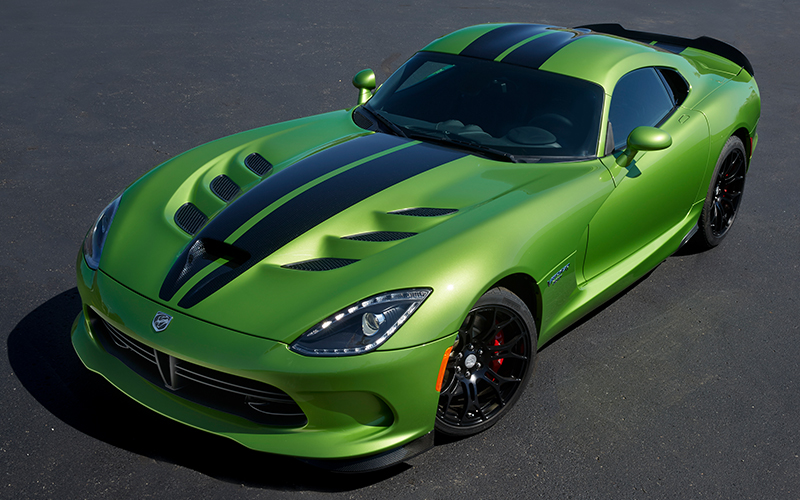
2017 Dodge Viper Snakeskin GTC – fcanorthamerica.com | Shop Dodge Viper on Carsforsale.com


